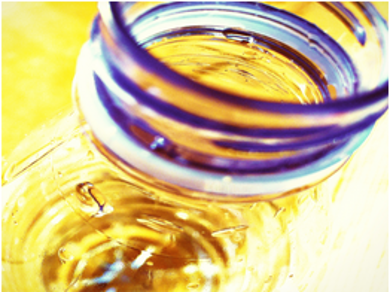More than 300 million tons of plastic are produced each year worldwide. This includes approx. 50 million tons of polyethylene terephthalate (PET). PET is mainly found in plastic bottles, but also in all kinds of packaging. As it is hardly biodegradable, it can be found even decades later as plastic waste and microplastic, for example, in the ocean as well as in beverages, fish, honey, etc.
Shosuke Yoshida, Kyoto Institute of Technology, Japan, and colleagues screened natural microbial communities exposed to PET waste in the environment. They isolated the novel bacterium Ideonella sakaiensis 201-F6, that is able to use PET as its major energy and carbon source. It almost completely degraded the PET after six weeks at 30 °C.
When grown on PET films, this strain produces two enzymes (PETase and MHETase) capable of hydrolyzing PET and the reaction intermediate, mono(2-hydroxyethyl) terephthalic acid. The enzymes convert PET efficiently into its monomers, terephthalic acid and ethylene glycol. In the end, 75 % of the carbon from the PET was converted to CO2.
Unclear is still, how and why these bacteria have developed these two highly specific enzymes. PET has been in the environment only around 70 years. This is extremely little time for an evolutionary adaptation to this new food source.
- A bacterium that degrades and assimilates poly(ethylene terephthalate),
Shosuke Yoshida, Kazumi Hiraga, Toshihiko Takehana, Ikuo Taniguchi, Hironao Yamaji, Yasuhito Maeda, Kiyotsuna Toyohara, Kenji Miyamoto, Yoshiharu Kimura, Kohei Oda,
Science 2016.
DOI: 10.1126/science.aad6359




